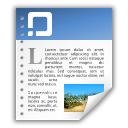| dc.contributor.advisor | Dr. Deborah Rowe | en |
| dc.contributor.author | Waugh, Jessica | |
| dc.date.accessioned | 2008-10-17T19:44:06Z | |
| dc.date.available | 2008-10-17T19:44:06Z | |
| dc.date.issued | 2008-09-15 | |
| dc.identifier.uri | http://hdl.handle.net/1803/1487 | |
| dc.description | Teaching and Learning Department Capstone Project | en |
| dc.description.abstract | The evidence supporting the inclusion of children's cultures and backgrounds into the classroom and curriculum is strong, and multicultural children's literature provides the perfect means to achieve this goal. Along with promoting acceptance and preparing students to be global citizens, the use of multicultural children's literature in the classroom greatly enables students, especially English Language Learners, to connect with the curriculum and succeed in elementary classrooms. Vocabulary, fluency, and comprehension, all very important, can be improved and strengthened by authentic readings of multicultural children's books. Multicultural children's literature provides the perfect opportunity to discuss literature and the meanings and issues that children pull from the readings. During these discussions, children are able to hear their classmates' perspectives and learn more about one another. This learning experience has the potential to transform the classroom environment, as well. As children learn to respect and welcome different opinions and ideas during discussions, they become part of a more accepting classroom. Research has shown that using multicultural children's literature can transform the classroom climate. Children are able to examine and discuss potential prejudices or misunderstandings. They also learn about their classmates backgrounds and are able to find similarities between themselves and their peers. Teachers can increase the power of multicultural children's literature in their classrooms by including it in the other subject areas to strengthen lessons. Social studies is one subject that truly comes alive through the use of multicultural children's literature. When children can see their culture present in the classroom and make personal connections with the materials, their academic and social growth is drastically increased. The ultimate responsibility for the successful use of multicultural children's literature falls on the teacher who must monitor, facilitate, and adjust instruction and ensure that the chosen books accurately portray the culture being presented. The authenticity of assessments is also preserved and nurtured by basing assessments on multicultural children's literature and related lessons. | en |
| dc.language.iso | en_US | en |
| dc.publisher | Vanderbilt University. Peabody College | en |
| dc.subject | Multicultural children's literature | en |
| dc.subject | Elementary instruction | en |
| dc.subject | English language learners | en |
| dc.subject.lcsh | English language -- Study and teaching (Elementary) -- Foreign speakers | en |
| dc.subject.lcsh | Multicultural education -- Study and teaching (Elementary) | en |
| dc.subject.lcsh | Cultural pluralism in literature -- Study and teaching (Elementary) | en |
| dc.title | Incorporating Multicultural Children's Literature into Elementary Classrooms | en |
| dc.description.college | Peabody College of Education and Human Development | en |
| dc.description.department | Department of Teaching and Learning | en |

